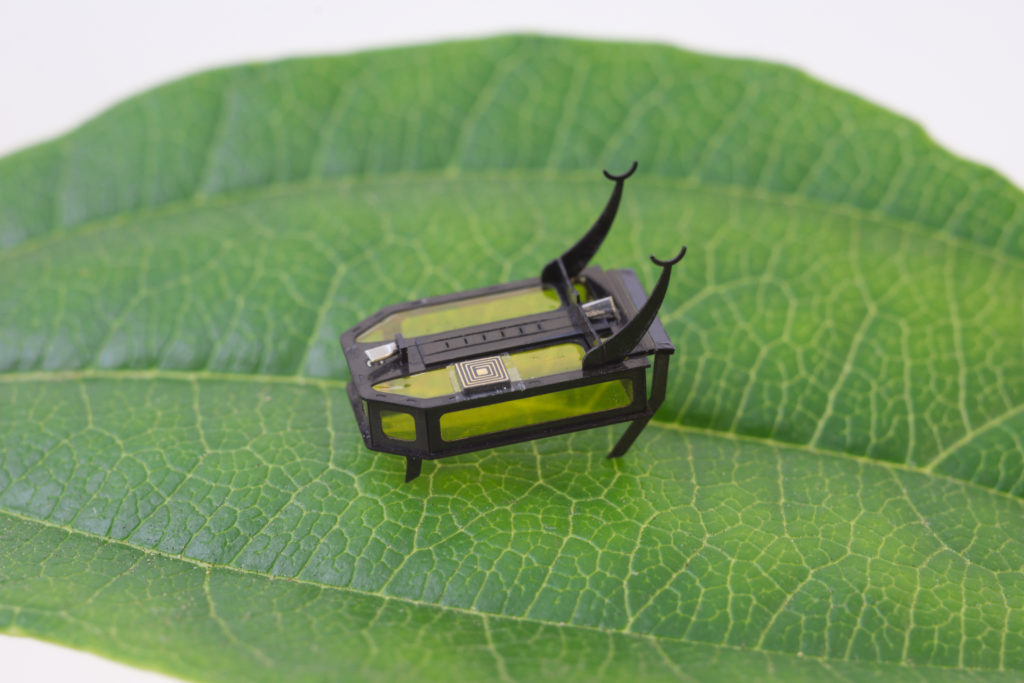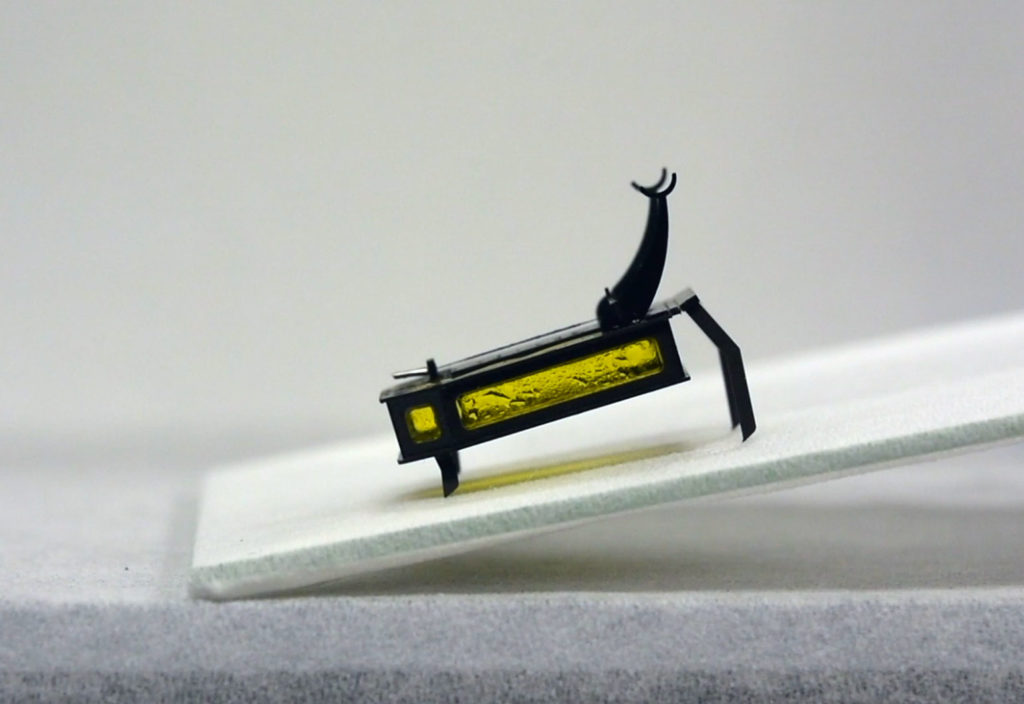New technology developed by researchers at the University of Southern California (USC), could spark a generation of microrobots capable of operating on land, water and air.
The RoBeetle is an 88-milligram, insect-scale autonomous crawling robot driven by a catalytic artificial muscle. It was created by Néstor O Pérez-Arancibia, experimental roboticist and Assistant Professor at USC Viterbi School of Engineering, along with PhD candidates Xiufeng Yang and Longlong Chang.
“Back in 2013, I founded the Autonomous Microrobotic Systems Laboratory,” Pérez-Arancibia said.
“One of my goals as a researcher is to create colonies composed of hundreds, or thousands, of insect-scale autonomous agents capable of coordinating to execute tasks useful for humans.”
While many impressive microrobots have been developed over the past 20 years, Pérez-Arancibia said progress in terms of autonomy had been hindered due to the fact that most subgram mobile robots rely on external electricity sources for sustained operations.
“[There has been a] lack of actuation methods with high work densities [that are] simultaneously capable of using sources of power with high energy densities,” he said.
“For instance, the best state-of-the-art commercially available subgram batteries have associated specific energies that do not exceed values in the order of 1.8 MJ/kg whereas that of the animal fat that powers insects is about 38 MJ/kg.”
Inspired by these observations, Pérez-Arancibia and his team developed a new type of non-electrical microactuation, based on the concept of controllable chemically-powered artificial muscles.
“We developed a new type of microactuator…[that] can be driven by the controlled catalytic combustion of fuels with high energy densities, including hydrogen, methanol, butane and propane,” Pérez-Arancibia said.
“This new microactuator functions as an artificial muscle — [it] extends and contracts — and is fabricated as a composite wire composed of an SMA Nitinol core and a catalytic surface made of platinum.”
To demonstrate the potential of this actuation technology, the team developed RoBeetle.
They tested the functionality and performance of the robot in a variety of situations, including varying atmospheric conditions, levels of surface roughness and angle of inclination. The RoBeetle’s ability to transport payloads was also evaluated, achieving a maximum payload of 2.6 times its own body weight.

Potential applications
With its fuel-powered design, Pérez-Arancibia said the biologically-inspired RoBeetle could spark a new generation of autonomous microrobots capable of terrestrial, aquatic and aerial movement.
“[This technology could] be applied in the creation of metre-scale robotic systems such as locomoting soft robots, hybrid exoskeletons and medical robots,” he said.
It could also prove useful for artificial pollination, as well as search and surveillance in constrained and dangerous environments.
“We now have a completely new method at our disposal to advance the field of microrobotics,” Pérez-Arancibia said.
“We can envision specialised microagents such as crawlers, swimmers and flyers… [and we] believe that this breakthrough will enable us to eventually create the very first fully autonomous subgram flying robot, biologically inspired by butterflies.”
